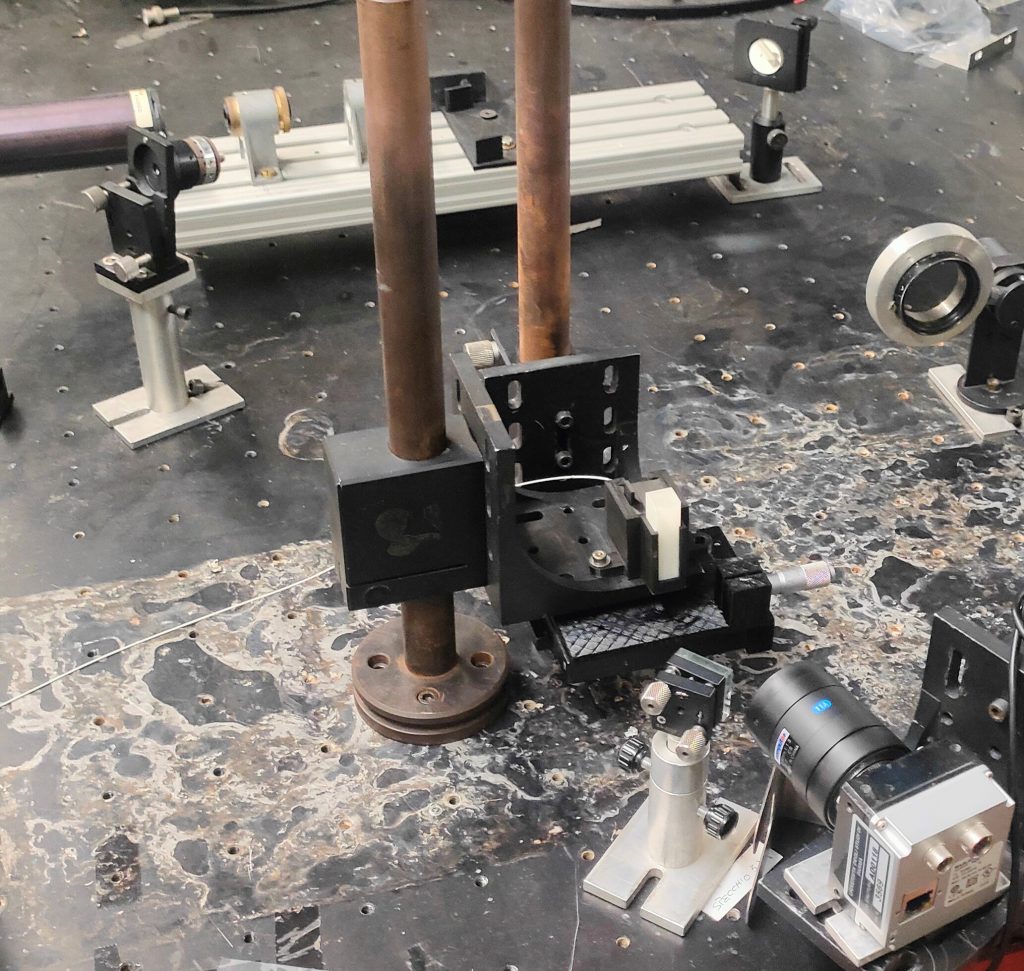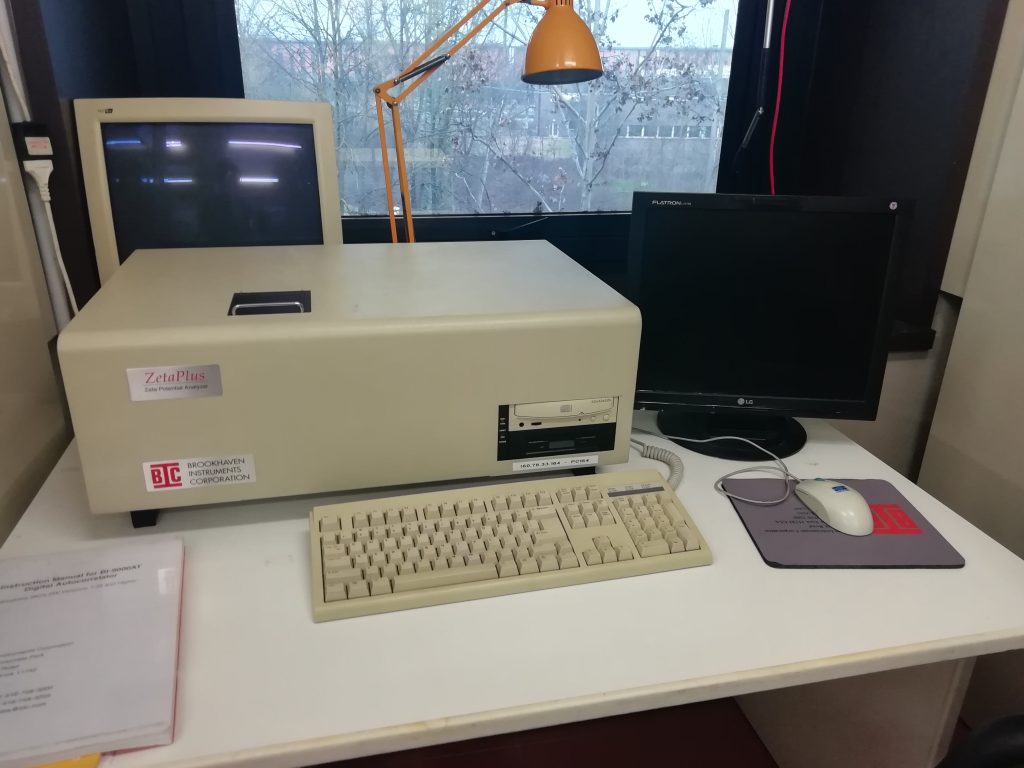
Diffusing Wave Spectroscopy (DWS) is a technique able to characterize microscopic structure, internal dynamics and rheological properties of turbid samples. DWS analyzes the time evolution of coherent light that has been multiply scattered within the sample, enabling the characterization of samples where DLS and microscopy measurements are impossible, such as in foams and emulsions.
Laser light, expanded by a series of lenses into a 1cm2 plane wave impinges on the sample, held in a cuvette. Light is collected by detectors in transmission and backscattering geometries; a correlator (software or hardware) calculates and analyses the intensity autocorrelation function of the scattered light.
Available Lasers: He-Ne (633nm), Solid State (473nm, 532 nm)
Detectors:
- Photomultiplier tube: shortest time accessible 2µs
- Basler Racer linecamera: 2048 pixels, shortest time accessible 12.4µs
- CMOS camera: 1Mpixel, shortest time accessible 1ms
- Longest accessible times: ~ 1 hour
Dynamic Light Scattering measurements on nanoparticles, capsules, microemulsions, are routinely used to determine the size of nanostructures undergoing Brownian motion.
Accessible size range: roughly, from 10nm up to 10 microns.
- Brookhaven ZetaPlus – Particle Sizing at 90° scattering angle and Zeta Potential measurements
- Custom Build DLS with goniometer and temperature stabilization for Static and Dynamic Light Scattering experiments at variable exchanged momentum.

